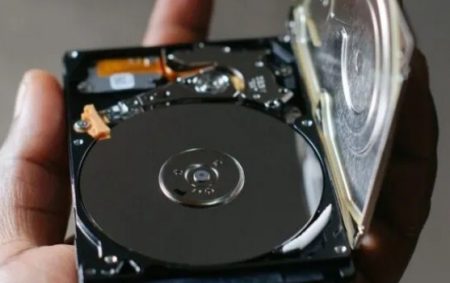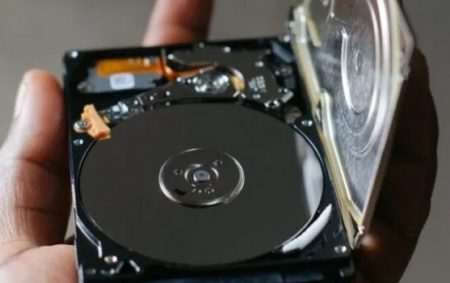
How to partition external hard drive windows 10.Currently, USB flash drives have almost completely replaced the use of CD/DVD ROM disks as storage units and even as boot devices, as they have evolved exponentially, acquiring capacities of up to 128 GB. It is precisely, in order to get the most out of that space on your drive , that you may need to partition it as if it were a hard drive.

You should know that this procedure is totally feasible to execute, just with the favorite applications of your Windows 10 computer, managing to expand the storage capacity of the USB memory. In theory, what you get is to subdivide the drive into several smaller ones , with which you can organize all the data and files they contain, and you could also simultaneously have operating systems converted into portables, which would serve as a boot drive. Continue reading so that you know the virtues of this procedure, as well as the step by step that you must follow from the Windows 10 operating system .
Index( )
- What are the benefits of partitioning your USB?
- Keep your files safe
- Better unit performance
- Have a better organization of files
- How to partition external hard drive windows 10.
- From disk management.
How to partition external hard drive windows 10
As you may have noticed, USB flash drives have many uses when they contain partitions, so if you have already decided that you want to divide your flash drive into several partitions through your Windows 10 system, then it is time for you to know in detail the procedure to follow .
From disk management
Windows 10 contains an extremely efficient graphical tool for partitioning hard drives, which can also be easily adapted to the task of partitioning the USB drive that you require, we are talking about the Hard Drive Manager , so to achieve this you must make sure you follow these steps:
- First of all, simultaneously type “Windows + X”, with this you will open the tools menu or WinX menu. There you will choose the “Disk Management” option.
- Now you will see a list with all the drives installed in the system (You must connect the USB drive beforehand), in the boxes where you can see the detail and a color bar, you will identify the drive you want to partition, the bar of this should be blue , which indicates that it is compact and you should reduce its volume. To do this, right-click on the drive and choose “Shrink Volume”, specify the amount of space to free up and click “Shrink”.
- Once the process is finished you will be able to make the disk partitions, again in the “Disk Management” window, right click on the drive and choose “ New simple volume”.
- A wizard will open to configure the partition, follow the procedure, specifying the amount of MB that you will assign to the division (It can be the total disk or just a part), it is recommended that you also indicate a letter to the disk, so that it is more Simple to identify, you will also need to format the USB drive with one of the file system settings, extFAT or FAT32. You can give the volume or partition a name or label.
You finish the process and you will be able to see the new characteristics of your USB memory drive , graphically, you will see two boxes that correspond to the two partitions that now have the drive. You can repeat this process several times to configure new partitions.
What are the benefits of partitioning your USB?
Generate a partition, means to create divisions in a unit, the logic behind this is to organize and assign a region for different functions . As of Windows 10, Microsoft incorporated the automatic recognition of several partitions on the same USB memory, which until then only did Linux, thus updating a much-requested function among users.
USB flash drives offer so many advantages that covering them completely in this article would be tedious so, to focus on today’s topic, it is recommended that you already know in depth about the USB flash drive, its uses, types and characteristics . The reason why they are usually partitioned is to configure multiple boots on them , although, however, many users achieve great advantages in memory partitioning. Next, we detail the main ones, so you can have the option to choose based on whether it is the process you want to carry out.
Keep your files safe
One of the main reasons that lead people to partition the USB memory drive is to take advantage of storing backup data or backup images on it, doing it in this way guarantees that it is encrypted on the flash drive. These copies are necessary to perform prior to any delicate procedure in the system. When you already have this backup, you need to know how to transfer files to a USB from a PC . Well, in case of failure or loss, you will be able to recover it to the last functional state with greater advantage and speed, since you had taken the corresponding provisions, which consequently guarantees the security of your files and preferences.
Better unit performance
Partitioning the USB drive allows you to improve its performance, because the processor will not have to read all the files and data stored uniquely on the drive, but, being divided, saves time in data repositioning . In addition, in the event of possible errors in the unit, it is easier to carry out the checks and optimization, precisely in this sense it is important that you know how to recover data from a USB memory .
Have a better organization of files
With storage drive partitioning, you assign each one its own file system, allowing you to manage each one independently and personally, for example, you can assign one for games, one for documents, and one as a boot drive , with an operating system, whatever your requirements, you can adapt them in your partitions.
Leave a Reply